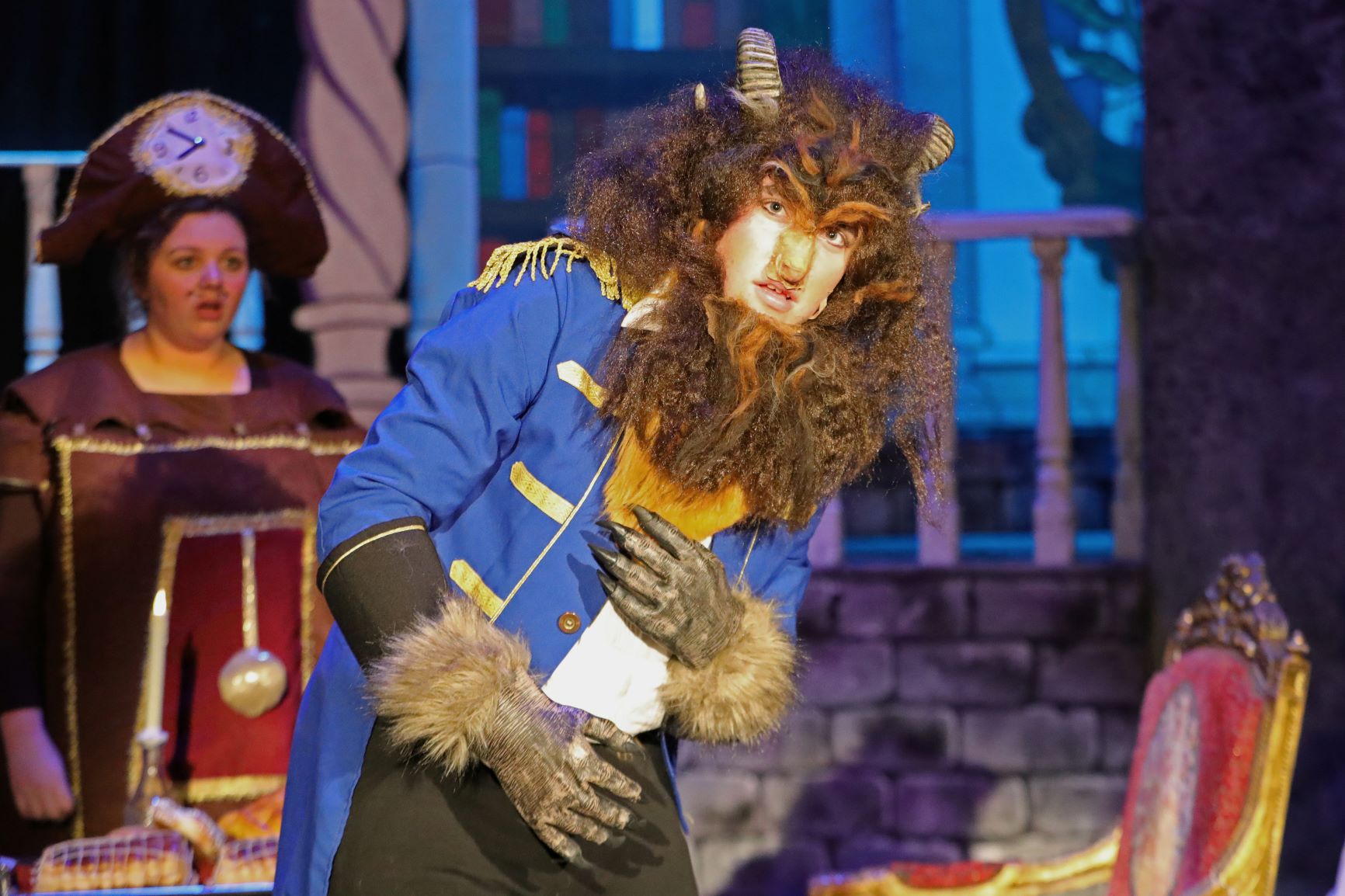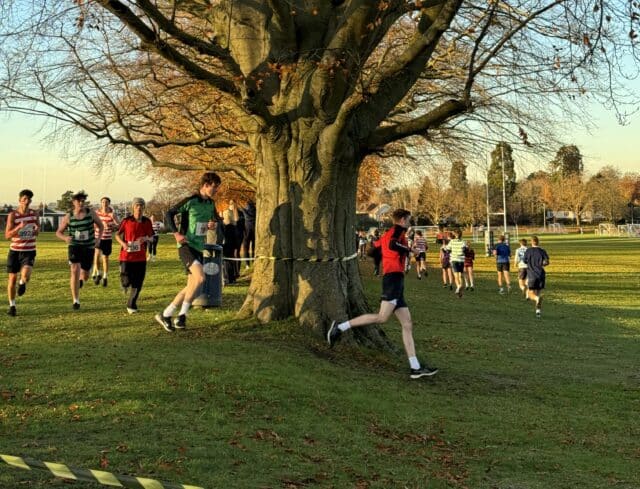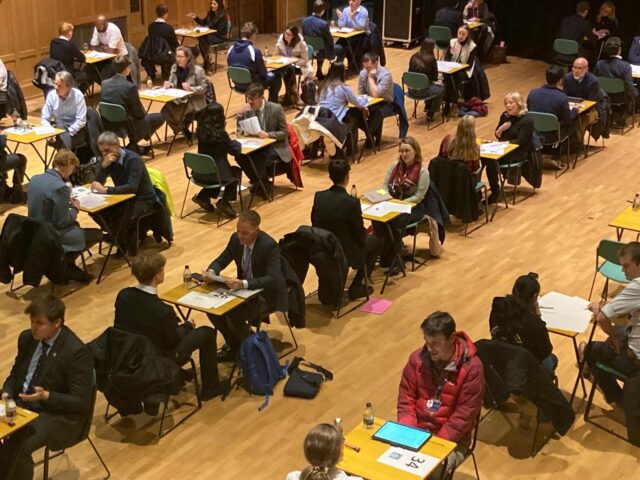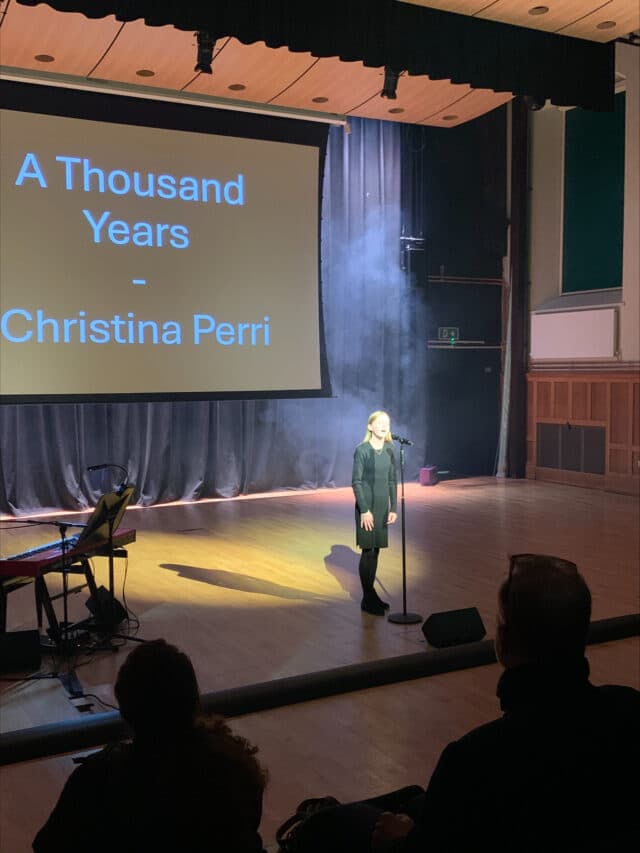This term’s production, Beauty & The Beast, is a modern adaptation of the fantastical French fairy tale. The 37-strong pupil cast and crew transported the audience to 18th Century France and brought to life the play’s theme of transformation. Mr Nicholas Fisher, Teacher of History & Politics, reviews the performance.
“As someone who grew up across the late 90s and 00s and spent much of their teenage years up to their eyeballs in musical theatre, I must confess to being an atypical millennial having somehow managed to avoid Disney musicals through much of my adolescence. It was shortly after agreeing to review Epsom College’s production of Beauty & the Beast that I realised it would be the first version of Beauty & the Beast I had ever seen.
What should I look out for? What should I expect? Not for the first time, I was rescued by my wife. She grew up in Orlando and actually spent her high school weekends playing Belle at Disney Land. She could definitely help me out.
Ultimately, she said, this is a show about transformation. While The Beast’s journey from cursed villain to handsome prince is the most famous transition of the show, each of the central characters has their own evolution to explore and, alongside some classic tunes, it promised to be quite an evening in store.
The prologue sets the tone for what is to come. The orchestra, immaculately lead by Mr Lodge, ominously plays underneath Verity Russell’s atmospheric and superbly delivered narration as members of the ensemble show how the eponymous Beast came to be. They explain to the audience the conditions that must be met for The Beast to break free from his curse, and leave us wondering “Who could ever love a beast?”.
Within seconds, we are transported to 18th Century France and our introduction to Alana Hinge’s Belle, who immediately captures the character’s yearning for adventure away from her small provincial town. Vocally, she soars through the opening number; her confident and emotive singing a recurring highlight of the production. Belle’s transformation is perhaps the most subtle of the central characters as she grows in confidence throughout the show to establish what really matters. Alana’s Belle is not one to settle for anything less than what is right, the character’s morality shines through in even the darkest passages of the plot. Her rendition of Home in Act One is reflective and touching, but her best work comes in Act Two as she teaches the Beast to read, and her reprisal of Home at the very end is beautifully done.
We really see the tenderness of the character in scenes alongside her father, Maurice, played by Zoe Wildenberg. Zoe really captures the pathos of the misunderstood inventor and is wonderfully uncomfortable when she finds herself in The Beast’s Castle, surrounded by living ornaments, seductive dusters and a terrifying Beast.
Daniel Lodge’s Beast has the most famous transformation of all and I was hugely impressed with the physicality he brought to the role. From his first emergence through the smoke, it becomes clear that this is a creature unused to walking on two legs. Clearly, Daniel put an immense amount of thought into how to embody this character, right down to his struggles with cutlery in the banquet scene. Throughout his dialogue, Beast speaks with a deep boom and almost primaeval roar. This means that when the fourth wall breaks and he lets the audience in on his fears and worries, the contrast is remarkable. I was particularly taken aback by the delicacy of Daniel’s singing, such a contrast to the rest of his characterisation really lets the audience see the man trapped inside that beastly exterior.
The scenes in the Beast’s mansion are my favourite, which is in no small part down to the excellent work of the Beast’s enchanted servants. Special note should go to Poppy Tilling and Barney Fildes as Cogsworth and Lumiere, these two are the comic heartbeat of the show and often have the unenviable task of driving the narrative forward after a big musical set-piece. Poppy’s Cogsworth is the epitome of tightly wound as she agonises over various dilemmas, alongside a wonderfully over-the-top Lumiere (complete with French accent and affectations). Barney really shines as a candelabra.
To sell these characters to the audience, the actors need to really lean into how silly they are and nowhere is that more true than with Polly Campbell’s Madame de la Grande Bouche.
It should not be possible to be elegant while dressed as a wardrobe, yet somehow Polly manages to pull this off while still delivering some of the best physical comedy of the evening.
Charmaine Lee has the thankless task of spending much of the evening inside a tea trolley as she portrays Chip the andromorphic teacup, yet still manages to imbue her performance with heartfelt optimism that love will triumph and it is wonderful to see her set free to join the dancing during Be Our Guest (of which more anon).
Mrs Potts gets perhaps the best song in the show, the titular Beauty and the Beast and Meredith Briggs sings this with great skill and expression alongside a high energy performance as the Castle’s mother figure. The final part of the motley domestic crew is Babette, the sultry feather duster, portrayed by Alice Griffiths, who oozes French charm across the stage and enjoys some wonderful repartee with Lumiere.
Alice doubles up as one of the three Silly Girls alongside Millie Milne and Bibi Watkins. This trio provides much of the physical comedy which is the hallmark of Miss Johnson’s excellent production. Constantly working in synch in their pursuit of Gaston, producing some excellent slapstick gags and often popping up in the background with some fun signage or background action there was a smile on my face whenever the trio are on stage.
Gaston himself is a paragon of toxic masculinity, all muscle and fragile ego played with gusto by John Warfield. John really leans into Gaston’s self-adoration and delivers a thoroughly enjoyable performance of this comic alpha male, utterly incapable of understanding why Belle would not be interested in him. All he was missing was a twinkle sound effect when he smiled to complete the effect.
On the rare occasions when we see a chink in Gaston’s armour, Ed Green’s Lefou is on hand to reinflate the ego. Ed is a really enjoyable sidekick act, slimy in his obsequiousness and I loved his displays of utter cowardice when facing problems on his own. He really gets to shine during the Tavern scene where he and the ensemble work to remind Gaston of his own magnificence and Ed clearly relishes his time conducting events.
A really good musical will often live and die by the efforts of its ensemble and Verity Russell, Juliette Cox, Anoushka Powell, Edie McLennan Fordyce, Tessa Vafai, Amy Mathers Polyanna Martin-Webb and the Caitlins Lynch & Wydenbach are never-ending reserves of energy and enthusiasm. Nowhere is this seen better than in Be Our Guest – delivered like a Las Vegas chorus line with Lumiere at its centre.
This really is the glorious centrepiece of the entire production. Mrs Buhagiar’s choreography is intricate and must have taken considerable practice to perfect, but perfect it they did. The ensemble tap dances and cancans with aplomb. while the dance ensemble takes centre stage with breathtaking displays of gymnastics from Sophia Palmer and Lonie Olu-Williams alongside the balletic grace of Xander Handley and Chris Lusala. The final flourish of this full cast effort is the firing of confetti cannons to accompany the onstage fireworks.
No stage production can ever be achieved without backstage support, and the crew of Beauty and The Beast, ably lead by Mr Kerswell and Miss Foster did a sterling job. There were a lot of moving parts amongst the regular scene changes which never disturbed the on-stage action, though the crew’s time to shine really came in their onstage appearance as a human cutlery set, it was not something I expected to see but something I was glad to witness.
As my introduction to Beauty and the Beast this show will take some topping. Everyone involved should be justly proud of what they’ve achieved.





